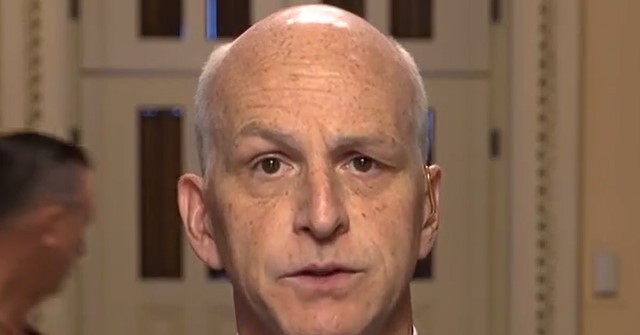On a recent episode of NewsNation’s “Cuomo,” Rep. Adam Smith, the Ranking Member of the House Armed Services Committee, discussed increasing concerns regarding drone activity near military installations. He emphasized that there is “no question” or “dispute” about the presence of drones flying over such facilities, particularly highlighting a series of unclassified reports related to sightings over Picatinny Arsenal in New Jersey. Smith’s comments indicate a growing recognition of the significance of these drone sightings, which have been officially acknowledged through visual reports.
During his discussion, Smith pointed out that the Pentagon has yet to dispute the drone sightings, although certain reports have been dismissed as misidentifications of manned aircraft or other errors. This acknowledgment signals a shift in how military oversight deals with drone traffic, as Smith reinforced that although drones are present, there is currently no confirmed evidence linking these drones to a specific foreign threat. He underscored the uncertainty of attributing the drone activity to particular adversaries, indicating the challenges the military faces in addressing this issue.
Smith also explained that tracking these drones using conventional radar systems proves problematic, complicating efforts to monitor their movements effectively. The limitations of existing radar systems suggest that military and defense officials must consider alternative methods for drone detection, which could involve deploying more advanced detection technologies. This necessity may stem from the evolving landscape of drone usage, wherein commercially available drones can operate within proximity to federally restricted airspace, particularly around sensitive military sites.
Moreover, the congressman’s remarks shed light on the broader implications of drones operating near military installations and the potential risks that such activities pose, not only in terms of national security but also regarding the safety of military personnel and operations. It raises further questions about regulatory frameworks surrounding drone usage and the need for more stringent oversight to mitigate possible threats posed by unauthorized drones.
As drone activity continues to escalate, Smith’s comments suggest a call to action for policymakers and defense agencies to adapt to new technologies and develop robust responses to the challenges these unmanned aerial vehicles present. The need for innovative solutions and better detection systems may be essential to maintaining the integrity of military operations and ensuring that unauthorized drone activity does not compromise national security.
Ultimately, the discussion surrounding drone sightings near military installations highlights a significant area of concern for lawmakers like Adam Smith. The situation necessitates ongoing dialogue and collaboration between military officials, lawmakers, and technology developers to establish comprehensive strategies that address the complexities of modern drone use, ensuring the protection of sensitive military assets while maintaining a proactive stance against unauthorized incursions.

